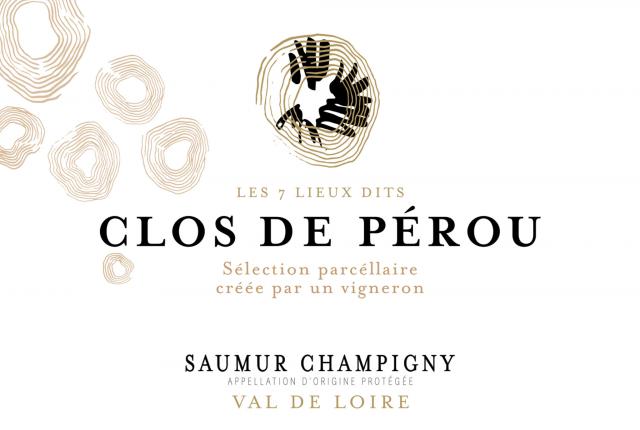The Lieu-dit is a group of small parcels of unique vines.
Because of its territorial, cadastral and historical unity, it constitutes a unique terroir...
The alchemy between its soil, its relief, its orientation, its climate and its grape variety, gives rise to Protected Designation of Origin wines of exceptional typicity and style. The respect of the terroir combined with the know-how of passionate winegrowers allows the best wines to be extracted.
Because of its territorial, cadastral and historical unity, it constitutes a unique terroir...
The alchemy between its soil, its relief, its orientation, its climate and its grape variety, gives rise to Protected Designation of Origin wines of exceptional typicity and style. The respect of the terroir combined with the know-how of passionate winegrowers allows the best wines to be extracted.
Presentation
Presentation
A legacy of the past, the "Clos de Pérou" vineyard has a history that is forever attached to it.
The history of this place depends on that of the village of Turquant which lived essentially from wine growing until 1880, when phylloxera destroyed the vineyard. The vine was replanted with rootstock but it took about ten years for it to return to its former glory. In order to survive, the winegrowers needed a complementary activity, so they invented the "pomme tapée". By taking the ferry, they went to get the fresh apples north of the Loire and prepared them in the underground ovens of the village. Today, only one craftsman makes the "pomme tapée", but the vine still provides a living for many passionate winegrowers.
Location
Surrounded by high walls, the Clos de Pérou is located near the village of Turquant, on the edge of a plateau, on the steep cliff that borders the left bank of the Loire (altitude between 50 and 75 metres).
Terroir
This Lieu-dit is only developed on tuffeau stone (upper Turonian chalk). The soils developed are mostly deep, clayey. There is a significant area of thin soil where the chalk is usually less than 60 cm deep and provides a moderate but relatively constant supply of water, which is conducive to quality viticulture.
The parcel benefits from a wide opening onto the Loire, and the Atlantic influences coming up the valley are clearly felt. The microclimate is mild and temperate.
Total surface area of the parcels: 5 ha
The parcel benefits from a wide opening onto the Loire, and the Atlantic influences coming up the valley are clearly felt. The microclimate is mild and temperate.
Total surface area of the parcels: 5 ha
In the vineyard
In the middle of an area with a temperate oceanic climate, the Saumur Champigny PDO zone has a particularly hot microclimate in summer, hence the name of this appellation which comes from the Latin "campus igni" or field of fire.
The use of prophylactic methods (disbudding, leaf removal) in order to favour the natural aeration of the stocks and to regulate the load; then, of reasoned cultivation in order to allow the most natural fight against cryptogamic diseases.
The use of prophylactic methods (disbudding, leaf removal) in order to favour the natural aeration of the stocks and to regulate the load; then, of reasoned cultivation in order to allow the most natural fight against cryptogamic diseases.
Winemaking
The harvest begins after checking the ripeness and health of the grapes.
- Total de-stemming of the harvest.
- Fermentation in thermo-regulated stainless steel vats, between 26 and 28°C.
- Light daily pumping over during the first third of the alcoholic fermentation, as well as a fairly long maceration to extract the full potential of the grapes.
- Malolactic fermentation in our cellars at a depth of 25 m.
- Total de-stemming of the harvest.
- Fermentation in thermo-regulated stainless steel vats, between 26 and 28°C.
- Light daily pumping over during the first third of the alcoholic fermentation, as well as a fairly long maceration to extract the full potential of the grapes.
- Malolactic fermentation in our cellars at a depth of 25 m.
Ageing
Isolated in one of the galleries, the wine continues its maturation in a quiet environment, protected from light and temperature variations for 6 to 10 months before bottling.
Varietal
Cabernet franc : 100%
Advice
Serving
Enjoy this wine slightly chilled (12 to 14°C).
Visual appearance
Deep ruby colour with purple tints.
At nose
Open nose, with notes of spices (black pepper), dried fruit (almond) and black fruit (cherry).
On the palate
Frank attack. Powerful palate with coated tannins. Persistent finish with liquorice notes.
Food pairings
Enjoy this wine with grilled, roasted or stewed meats such as beef cheek with beer.
Reviews
"La robe brillante couleur rouge-noir intense s'ouvre sur un nez expressif qui associe les odeurs des fruits rouges (framboise, groseille) à des notes torréfiées et épicées. La bouche à l'attaque souple offre une matière charnue, du volume, un bel équilibre, ainsi que des arômes fruités (fraise), grillés, vanillés et toastés, qui enrobent des tanins puissants puis persistent dans une finale structurée, longue et généreuse. très beau Saumur Champigny. "Fort potentiel"." [+]


